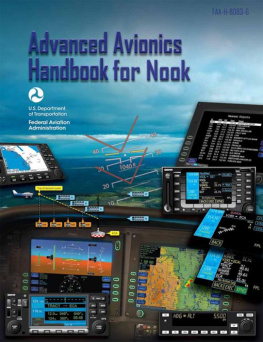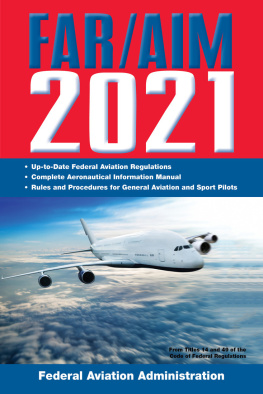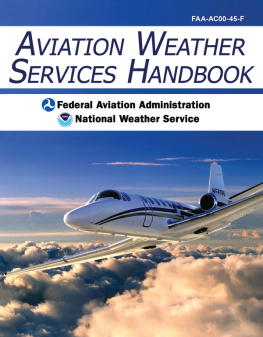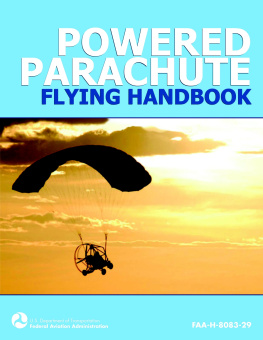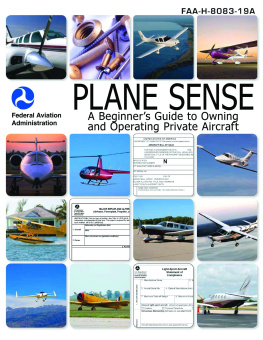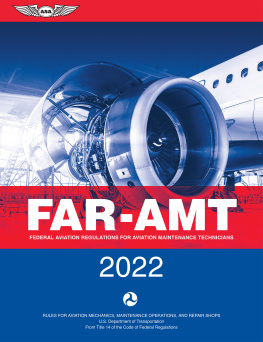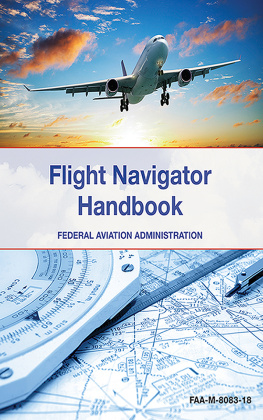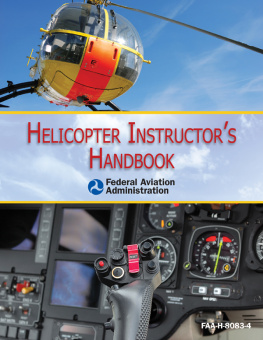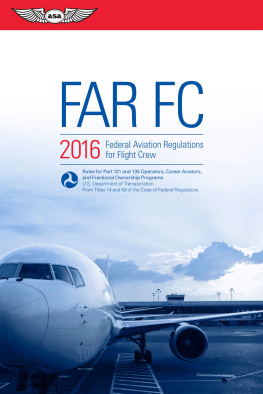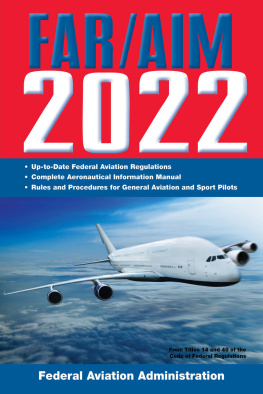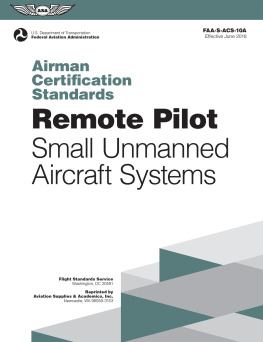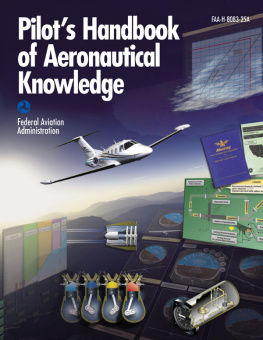Federal Aviation Administration - Advanced Avionics Handbook: FAA-H-8083-6
Here you can read online Federal Aviation Administration - Advanced Avionics Handbook: FAA-H-8083-6 full text of the book (entire story) in english for free. Download pdf and epub, get meaning, cover and reviews about this ebook. year: 2009, publisher: Aviation Supplies & Academics, Inc., genre: Home and family. Description of the work, (preface) as well as reviews are available. Best literature library LitArk.com created for fans of good reading and offers a wide selection of genres:
Romance novel
Science fiction
Adventure
Detective
Science
History
Home and family
Prose
Art
Politics
Computer
Non-fiction
Religion
Business
Children
Humor
Choose a favorite category and find really read worthwhile books. Enjoy immersion in the world of imagination, feel the emotions of the characters or learn something new for yourself, make an fascinating discovery.
- Book:Advanced Avionics Handbook: FAA-H-8083-6
- Author:
- Publisher:Aviation Supplies & Academics, Inc.
- Genre:
- Year:2009
- Rating:4 / 5
- Favourites:Add to favourites
- Your mark:
- 80
- 1
- 2
- 3
- 4
- 5
Advanced Avionics Handbook: FAA-H-8083-6: summary, description and annotation
We offer to read an annotation, description, summary or preface (depends on what the author of the book "Advanced Avionics Handbook: FAA-H-8083-6" wrote himself). If you haven't found the necessary information about the book — write in the comments, we will try to find it.
Federal Aviation Administration: author's other books
Who wrote Advanced Avionics Handbook: FAA-H-8083-6? Find out the surname, the name of the author of the book and a list of all author's works by series.
Advanced Avionics Handbook: FAA-H-8083-6 — read online for free the complete book (whole text) full work
Below is the text of the book, divided by pages. System saving the place of the last page read, allows you to conveniently read the book "Advanced Avionics Handbook: FAA-H-8083-6" online for free, without having to search again every time where you left off. Put a bookmark, and you can go to the page where you finished reading at any time.
Font size:
Interval:
Bookmark:
The FAA wishes to acknowledge the following aviation manufacturers and companies that provided images used in this handbook:
Avidyne Corporation
Cirrus Design, Inc.
Garmin Ltd.
Rockwell Collins, Inc.
S-Tec Corporation
The FAA would also like to extend its appreciation to the General Aviation Manufacturers Association (GAMA) for its assistance and input in the preparation of this handbook.
Introduction to Advanced Avionics
This handbook is designed as a technical reference for pilots who operate aircraft with advanced avionics systems. Whether flying a conventional aircraft that features a global positioning system (GPS) navigation receiver or a new aircraft with the latest integrated glass cockpit advanced) avionics system, you should find this handbook helpful getting started. The arrival of new technology to general aviation aircraft has generated noticeable changes in three areas: information, automation, and options.
Pilots now have an unprecedented amount of information available at their fingertips. Electronic flight instruments i innovative techniques to determine aircraft attitude, speed, and altitude, presenting a wealth of information in one more integrated presentations. A suite of cockpit information systems provides pilots with data about aircraft position, planned route, engine health and performance, as well surrounding weather, traffic, and terrain.
Advanced avionics systems can automatically perform many tasks that pilots and navigators previously did by hand. For example, an area navigation (RNAV) or flight management system (FMS) unit accepts a list of points that define a flight route, and automatically performs most of the course, distance, time, and fuel calculations. Once en route, the FMS or RNAV unit can continually track the position of the aircraft with respect to the flight route, and display the course, time, and distance remaining to each point along the planned route. An autopilot is capable of automatically steering the aircraft along the route that has been entered in the FMS or RNAV system. Advanced avionics perform many functions and replace the navigator and pilot in most procedures. However, with the possibility of failure in any given system, the pilot must be able to perform the necessary functions in the event of an equipment failure. Pilot ability to perform in the event of equipment failure(s) means remaining current and proficient in accomplishing the manual tasks, maintaining control of the aircraft manually (referring only to standby or backup instrumentation), and adhering to the air traffic control (ATC) clearance received or requested. Pilots of modern advanced avionics aircraft must learn and practice backup procedures to maintain their skills and knowledge. Risk management principles require the flight crew to always have a backup or alternative plan, and/or escape route. Advanced avionics aircraft relieve pilots of much of the minute-to-minute tedium of everyday flights, but demand much more initial and recurrent training to retain the skills and knowledge necessary to respond adequately to failures and emergencies.
The FMS or RNAV unit and autopilot offer the pilot a variety of methods of aircraft operation. Pilots can perform the navigational tasks themselves and manually control the aircraft, or choose to automate both of these tasks and assume a managerial role as the systems perform their duties. Similarly, information systems now available in the cockpit provide many options for obtaining data relevant to the flight.
Advanced avionics systems present three important learning challenges as you develop proficiency:
- How to operate advanced avionics systems
- Which advanced avionics systems to use and when
- How advanced avionics systems affect the pilot and the way the pilot flies
The first challenge is to acquire the how-to knowledge needed to operate advanced avionics systems. This handbook describes the purpose of each kind of system, overviews the basic procedures required to use it, explains some of the logic the system uses to perform its function, and discusses each systems general limitations. It is important to note that this handbook is not intended as a guide for any one manufacturers equipment. Rather, the aim is to describe the basic principles and concepts that underlie the internal logic and processes and the use of each type of advanced avionics system. These principles and concepts are illustrated with a range of equipment by different manufacturers. It is very important that the pilot obtain the manufacturers guide for each system to be operated, as only those materials contain the many details and nuances of those particular systems. Many systems allow multiple methods of accomplishing a task, such as programming or route selection. A proficient pilot tries all methods, and chooses the method that works best for that pilot for the specific situation, environment, and equipment. Not all aircraft are equipped or connected identically for the navigation system installed. In many instances, two aircraft with identical navigation units are wired differently. Obvious differences include slaved versus non-slaved electronic horizontal situation indicators (EHSIs) or primary flight display (PFD) units. Optional equipment is not always purchased and installed. The pilot should always check the equipment list to verify what is actually installed in that specific aircraft. It is also essential for pilots using this handbook to be familiar with, and apply, the pertinent parts of the regulations and the Aeronautical Information Manual (AIM).
Advanced avionics equipment, especially navigation equipment, is subject to internal and external failure. You must always be ready to perform manually the equipment functions which are normally accomplished automatically, and should always have a backup plan with the skills, knowledge, and training to ensure the flight has a safe ending.
The second challenge is learning to manage the many information and automation resources now available to you in the cockpit. Specifically, you must learn how to choose which advanced cockpit systems to use, and when. There are no definitive rules. In fact, you will learn how different features of advanced cockpit avionics systems fall in and out of usefulness depending on the situation. Becoming proficient with advanced avionics means learning to use the right tool for the right job at the right time. In many systems, there are multiple methods of accomplishing the same function. The competent pilot learns all of these methods and chooses the method that works best for the specific situation, environment, and equipment. This handbook will help you get started in learning this important skill.
The third challenge is learning how advanced avionics systems affect the pilot. The additional information provided by advanced avionics systems can affect the way you make decisions, and the ability to automate pilot tasks can place you in the role of system supervisor or manager. These ideas are presented throughout the handbook using a series of sidebars illustrating some of the issues that arise when pilots work with advanced avionics systems. This series is not a complete list; rather, its purpose is to convey an attitude and a manner of thinking that will help you continue to learn.
The Learning series provides tips that can help expedite mastery of advanced avionics. You will learn why taking the time to understand how advanced systems work is a better learning strategy than simply memorizing the button-pushing procedures required to use each system. The importance of committing to an ongoing learning process will be explained. Because of the limits of human understanding, together with the quirks present in computerized electronic systems of any kind, you will learn to expect, and be prepared to cope with, surprises in advanced systems. Avionics equipment frequently receives software and database updates, so you must continually learn system functions, capabilities, and limitations.
Font size:
Interval:
Bookmark:
Similar books «Advanced Avionics Handbook: FAA-H-8083-6»
Look at similar books to Advanced Avionics Handbook: FAA-H-8083-6. We have selected literature similar in name and meaning in the hope of providing readers with more options to find new, interesting, not yet read works.
Discussion, reviews of the book Advanced Avionics Handbook: FAA-H-8083-6 and just readers' own opinions. Leave your comments, write what you think about the work, its meaning or the main characters. Specify what exactly you liked and what you didn't like, and why you think so.

